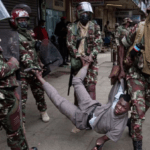Reading Time: 2 minutesThe term “British” typically refers to the people who live in the United Kingdom today. The United Kingdom is a sovereign state that includes four constituent countries; England, Scotland, Wales, and Northern Ireland. These countries are not colonies but are integral parts of the United Kingdom. The British people are a diverse group with a long and complex history. Here is a brief overview of the origin of the British people. The English. The English people are the largest ethnic group in the United Kingdom. They are primarily descended from various Germanic tribes, including the Angles, Saxons, and Jutes, who migrated to what is now England during the early Middle Ages. The English language, culture, and legal system have a strong Anglo-Saxon Influence. The Scots. They are primarily descended from various Celtic and Pictish tribes that inhabited what is now Scotland before the arrival of the Romans. Later, the Kingdom of Scotland emerged, and the Scots became influenced by Gaelic and Norse cultures. The Act of Union in 1707 created the Kingdom of Great Britain, incorporating Scotland into the British state. The Welsh. They are of Celtic descent and have inhabited Wales for centuries. They have their own language, Welsh(Cymraeg), which is still spoken by a portion of the population. Wales was annexed by England in the late 13th century. It became an integral part of the Kingdom of England before the formal union with Scotland and Ireland. READ ALSO: King Charles’s Second Day of His Visit to Kenya The Northern Irish. The history of Northern Ireland is complex and intertwined with that of the rest of Ireland. The population of Northern Ireland includes both those of Irish and Scottish ancestry, as well as various immigrant groups who settled in the region over centuries. The Troubles, a period of political and sectarian conflict has left a lasting impact on the region. British encompasses a wide range of ethnic backgrounds and identities. Modern Britain is a diverse and multicultural society, shaped by waves of immigration, colonial history, and global influences The British people themselves were not colonized by another group. Instead, they were the ones who established one of the largest and most influential empires in history, known as the British Empire. The British Empire, at its height in the 19th and early 20th centuries, spanned the globe and included territories in North America, the Caribbean, Africa, Asia, the Pacific, and more.





